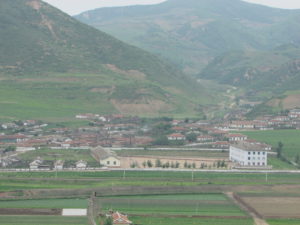By: Benjamin Katzeff Silberstein
Some interesting reporting by Hankyoreh, citing South Korean government sources familiar with the US-North Korea negotiations, suggests that North Korea is pushing for two concessions from the US:
According to a South Korean government source closely acquainted with the North Korea-US talks, Kim reaffirmed the North’s willingness to dismantle its Yongbyon nuclear facilities during the first round of working-level talks in Pyongyang on Feb. 6–8, while demanding the partial loosening of sanctions as a corresponding measure for allowing inspections of the facilities. The North Korean side said it “could offer more generous steps” if the US were to even partially loosen sanctions as a corresponding measure, the source reported.
Politically, this makes a great deal of sense. Yongbyon dismantlement would make for great photo-ops and video clips, regardless of the actual substantive meaning of such actions. For North Korea, partially loosened sanctions would be highly beneficial for several reasons. For one, it could be a tacit signal to China and Russia that the US will no longer be as vigilant on sanctions monitoring as it has been in the past. Moreover, should North Korea push for the ceiling on its oil imports to be lowered, that would likely save the regime substantial amounts of hard currency that it now has to put towards more expensive, illicit transfers and the like. Gas prices in the country have stabilized over the past few months, but are still higher than in normal times. (I dig into this more in a new working paper published by the Stimson Center, click here to read it.)
And not least, any sanctions exemptions on Mt Kumgang and the like could – hopefully, from the regime’s point of view – be a first step to more South Korean investments and cash flows to tourism in North Korea, one of Kim Jong-un’s hallmark industries.
According to Hankyoreh, none of this is out of the question:
Biegun stated in no uncertain terms that the US would not be able to loosen or lift sanctions. At the same time, he reportedly suggested it may consider loosening sanctions if North Korea were to offer the Yongbyon dismantlement “plus something extra.”
And:
Accordingly, they suggested that if North Korea adopts a more forward-thinking approach on the Yongbyon dismantlement issue during negotiations, the US may grant priority consideration to projects involving inter-Korean cooperation, including partial resumption of the Kaesong Complex and Mt. Kumgang tourism. This prediction was based on the limited range of measures available to the US without touching the current sanctions framework. Indeed, many Korean Peninsula experts have noted that the Mt. Kumgang tourism venture individually would not be in violation of UNSC resolutions and suggested that it should be quickly resumed.
I’m no judicial sanctions expert, but I suspect that this might not be entirely accurate. If sanctions are strenuous enough to prevent South Korean reporters to bring in laptops into North Korea, it’s easy to wonder how large-ish-scale tourism to North Korea through Kumgangsan wouldn’t risk violating sanctions. In a way, the multilateral UN sanctions are easier to loosen in practice. A strong, even informal signal from the US to China could make the latter re-interpret its sanctions interpretations, and make monitoring and enforcement much more loose. Truck traffic has reportedly already increased across the border compared to a few months ago, and it’s a trend that’ll likely become increasingly more pronounced the less vigilant the US is about pushing for rigid sanctions implementation.
Article source:
N. Korea demands partial relaxation of sanctions in exchange for Yongbyon inspections
Kim Ji-eun
Hankyoreh
2019-02-14

